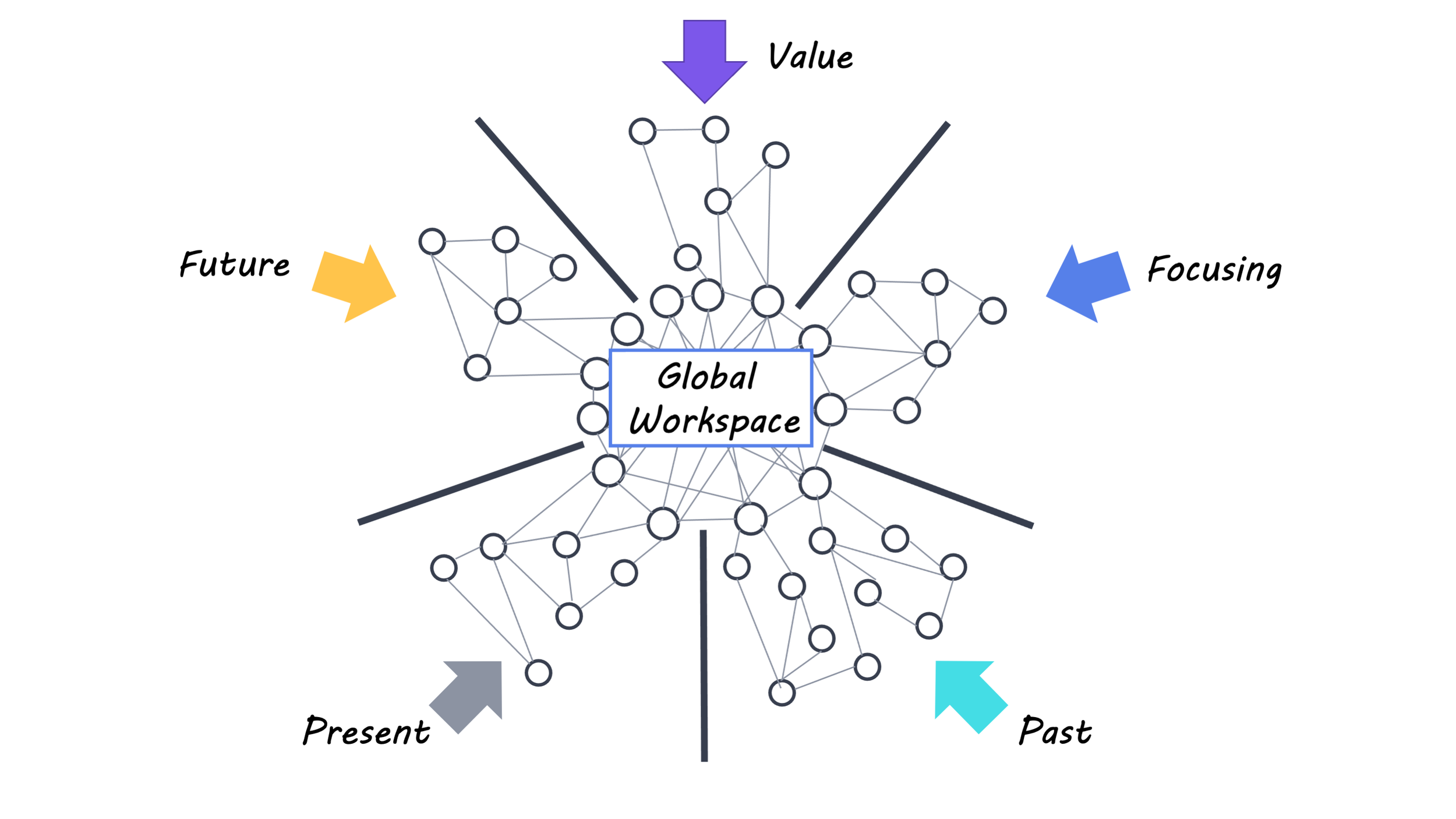The ‘Global Workspace’ of the Human Brain
Post by Lani Cupo
What's the science?
Previous research suggests that there are brain regions central to controlling the flow of information throughout the brain. This flow of information allows for the orchestration of human behaviour and has been proposed to be essential for consciousness. These brain regions can be thought of as a ‘global workspace’ that integrates lower-level sensory information and memory before broadcasting back to the whole brain. However, which brain regions comprise this ‘global workspace’ of the brain remain unclear. This week in Nature Human Behaviour, Deco and colleagues identified these brain regions using a large functional magnetic resonance imaging (fMRI) data set, examining which areas were involved while participants executed seven different behavioural tasks versus during rest.
How did they do it?
The authors included fMRI scans from 1,003 participants, including both men and women. The scans comprised the resting brain, as well as seven behavioural tasks assessing working memory, motor skills, reward processing, language processing, social cognition, emotional processing, and relational processing. The authors’ first step was to compute information flow between regions by mathematically modelling (normalized directed transfer entropy framework) how brain activity in a given region is causally related to other areas over time. Specifically, they sought to establish the hierarchy of information flow, including the identification of the top-level regions with a lot of incoming information and communication between them but relatively little outgoing information. This allowed them to locate regions that orchestrate brain function across tasks. They identified areas in the so-called ‘functional rich club’ (i.e., brain regions highly connected to one another) that were involved in this high-level processing role across all the tasks and during rest. Next, they created a computational model of the whole brain fitting the information flow between brain regions. To confirm they had identified core functional rich club areas central to processing, they removed the identified brain regions from the computational model, examining the extent to which the model was altered when each region was removed. The more information flow was altered after removing a region, the greater this brain region’s executive functioning proved to be.
What did they find?
Eight brain areas were identified within the central core of those regions organizing behaviour. These included the left precuneus, left nucleus accumbens, left putamen, left posterior cingulate cortex, right hippocampus, right amygdala, and left and right isthmus cingulate. These brain regions comprise both areas in the cerebral cortex, such as the precuneus, and deeper subcortical structures, like the amygdala. The authors suggest that these regions in the global workspace are ideally located to integrate information from the senses, long-term memory, value judgments, and attention devoted to controlling behavior. By simulating lesions to these areas, they demonstrated that removing all of the identified functional rich club areas impacted information flow significantly more than when they removed brain areas outside of the functional rich club.
What's the impact?
This study provides evidence that the brain is organized in a hierarchy, with certain lower-level regions performing low-level processing while other higher-order regions integrate information from multiple sources, orchestrating human behavior and consciousness. By identifying the set of regions that fulfill high-level processing roles in the brain, the authors helped to characterize the structure and direction of information flow in the brain while quantifying the global workspace.
Deco et al. Revisiting the Global Workspace Orchestrating the Hierarchical Organization of the Human Brain. Nature Human Behaviour (2021). Access the original scientific publication here.


